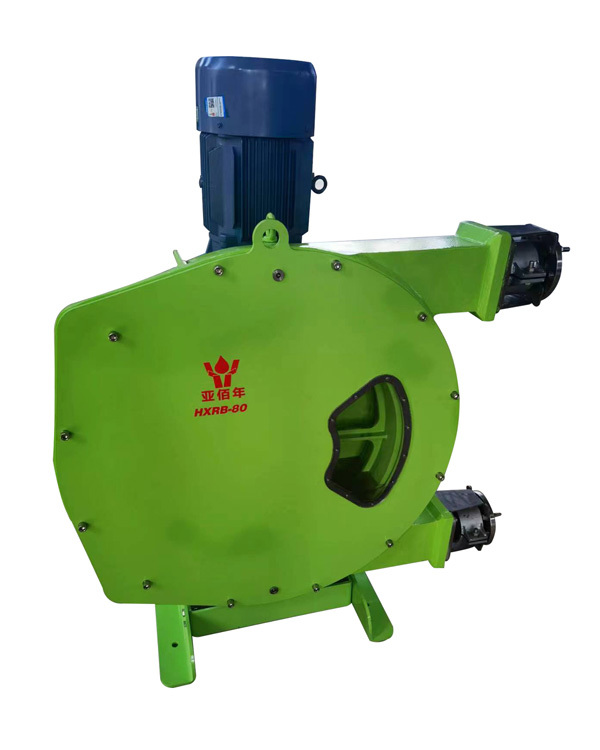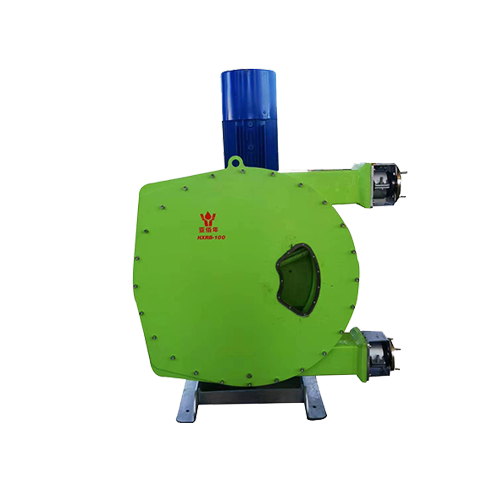Understanding the Role of Peristaltic Pumps in Handling Abrasive Fluids
Feb 27,2025

Peristaltic pumps are a type of positive displacement pump, which operate by compressing and releasing a flexible tube, thus creating a suction effect that draws fluid into the pump chamber. This mechanism is particularly beneficial when handling abrasive fluids, which can be challenging for traditional pumping systems. Abrasive fluids, often containing solid particles or corrosive substances, require careful handling to prevent damage to pump components and ensure a long service life.
One of the primary advantages of using peristaltic pumps for abrasive fluids lies in their design. The fluid only contacts the interior of the flexible tubing, which means that the pump casing and other parts remain unexposed to the fluid. This minimizes wear and tear on the pump components, significantly extending the lifespan of the equipment. Additionally, peristaltic pumps are capable of handling a wide range of viscosities, making them versatile for various industrial applications.
Another noteworthy feature of peristaltic pumps is their self-priming ability. This characteristic is particularly advantageous when dealing with abrasive fluids that may contain air pockets or solids. The pump can effectively manage these challenges without requiring complex priming procedures, thereby enhancing operational efficiency and reducing downtime.
When selecting a peristaltic pump for abrasive fluids, several factors should be considered. The choice of tubing material is crucial, as it directly influences the pump's resistance to abrasion and chemical compatibility. Common materials include silicone, polyurethane, and thermoplastic elastomers, each offering different levels of durability against abrasive materials. It's essential to match the tubing material with the specific nature of the fluid being pumped to ensure optimal performance.
Moreover, the pump's flow rate and pressure capabilities should align with the requirements of your application. Understanding the viscosity and density of the abrasive fluid will assist in determining the most suitable pump configuration. Additionally, integrating features such as variable speed drives can offer better control over flow rates, further enhancing the pump's adaptability to changing operational conditions.
In conclusion, peristaltic pumps present a robust solution for the challenges posed by abrasive fluids in industrial settings. By leveraging their unique design and operational advantages, businesses can enhance efficiency and reduce maintenance costs while ensuring the safe transportation of challenging materials. When properly selected and configured, peristaltic pumps can deliver reliable performance, making them an essential tool in the arsenal of industrial equipment.
One of the primary advantages of using peristaltic pumps for abrasive fluids lies in their design. The fluid only contacts the interior of the flexible tubing, which means that the pump casing and other parts remain unexposed to the fluid. This minimizes wear and tear on the pump components, significantly extending the lifespan of the equipment. Additionally, peristaltic pumps are capable of handling a wide range of viscosities, making them versatile for various industrial applications.
Another noteworthy feature of peristaltic pumps is their self-priming ability. This characteristic is particularly advantageous when dealing with abrasive fluids that may contain air pockets or solids. The pump can effectively manage these challenges without requiring complex priming procedures, thereby enhancing operational efficiency and reducing downtime.
When selecting a peristaltic pump for abrasive fluids, several factors should be considered. The choice of tubing material is crucial, as it directly influences the pump's resistance to abrasion and chemical compatibility. Common materials include silicone, polyurethane, and thermoplastic elastomers, each offering different levels of durability against abrasive materials. It's essential to match the tubing material with the specific nature of the fluid being pumped to ensure optimal performance.
Moreover, the pump's flow rate and pressure capabilities should align with the requirements of your application. Understanding the viscosity and density of the abrasive fluid will assist in determining the most suitable pump configuration. Additionally, integrating features such as variable speed drives can offer better control over flow rates, further enhancing the pump's adaptability to changing operational conditions.
In conclusion, peristaltic pumps present a robust solution for the challenges posed by abrasive fluids in industrial settings. By leveraging their unique design and operational advantages, businesses can enhance efficiency and reduce maintenance costs while ensuring the safe transportation of challenging materials. When properly selected and configured, peristaltic pumps can deliver reliable performance, making them an essential tool in the arsenal of industrial equipment.
Contact Us
E-mail :
sales@yaquanpump.com
service@yaquanpump.com
Phone/WhatsApp:
+44 7301702546
+63 9452052801
Address:
Room B208, Building 2, North Hongqiao Songri Center, No.215 Gaochao Road, Jiading District, Shanghai









